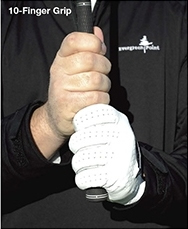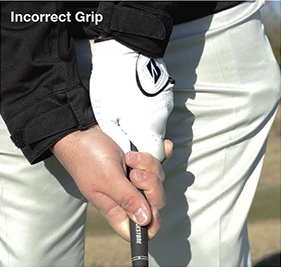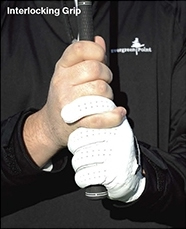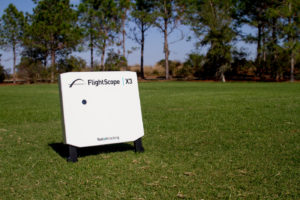Did you set a new year’s resolution to fix your golf swing? If so, did your plan involve fixing your grip? Probably not. Many players overlook how important the grip is in the golf swing. Sam Snead once said that “it is impossible to play good golf without a proper grip.” But what is proper for one player may not be the right choice for you. To help you find rhythm with your swing you need to have a grip that fits your physical characteristics. There are three basic types of grips that are used by the majority of golfers: 1) the overlap, 2) the interlock, and 3) the ten-finger grip. We are going to go over each type of grip and determine which one is your perfect fit.
 First, let’s take a look at the overlapping grip. It was passed down by one of the game’s early great players, Harry Vardon. Many players call the overlap grip the Vardon grip. Mr. Vardon had large fingers and strong hands, so by using an overlapped grip this allowed him to grip the club comfortably and was able to limit the break down of the left wrist at impact. Using the overlapping grip has a left-side emphasis and better fits players with reasonable strength levels who also have the flexibility to make a full turn and utilize the large muscles of the back and core, or players who are very right-side dominant which causes the left-side to continually break down.
First, let’s take a look at the overlapping grip. It was passed down by one of the game’s early great players, Harry Vardon. Many players call the overlap grip the Vardon grip. Mr. Vardon had large fingers and strong hands, so by using an overlapped grip this allowed him to grip the club comfortably and was able to limit the break down of the left wrist at impact. Using the overlapping grip has a left-side emphasis and better fits players with reasonable strength levels who also have the flexibility to make a full turn and utilize the large muscles of the back and core, or players who are very right-side dominant which causes the left-side to continually break down.
The next grip is the interlocking grip. It is used by those who do not have larger athletic hands. It is more comfortably suited for those who might have short-fingers, those weak in grip strength, junior players, and the majority of ladies. Jack Nicklaus used an interlocking grip, and he said he felt that “the hands were more secure and unified with this grip over the overlapping grip.” This grip has its advantages by helping the hands to be balanced and working together, but you need to be sure and not to interlock the little finger on the right hand and the index finger on the left hand too deep. This will force the right hand grip on the club into the palm rather than the fingers.
 The ten-finger grip, sometimes called the baseball grip, is natural for most new players (beginners/juniors) to the game. Players who use this grip seek to cover more of the grip surface in order to use the right hand more and exert more pressure against the shaft so as to square the face and provide power. Players get more right hand leverage in this grip than the others due to more of the grip surface being covered on the lower portion of the shaft. This grip is recommended for those whose smaller hands occupy less area on the grip. This is also recommended for players who cannot generate enough club head speed through centrifugal force using their large muscles. Players that have big, strong hands should stay away from this grip because it can cause too much right hand leverage in the swing and create wayward shots.
The ten-finger grip, sometimes called the baseball grip, is natural for most new players (beginners/juniors) to the game. Players who use this grip seek to cover more of the grip surface in order to use the right hand more and exert more pressure against the shaft so as to square the face and provide power. Players get more right hand leverage in this grip than the others due to more of the grip surface being covered on the lower portion of the shaft. This grip is recommended for those whose smaller hands occupy less area on the grip. This is also recommended for players who cannot generate enough club head speed through centrifugal force using their large muscles. Players that have big, strong hands should stay away from this grip because it can cause too much right hand leverage in the swing and create wayward shots.
One thing to keep in mind when choosing a grip to go with is that the right hand and the left hand need to keep each other balanced throughout the swing. Golf is a two-sided, bi-lateral game. Over emphasis with one side will throw the other off balance and end up with miss hits. Hopefully by getting to know the other types of grips, you can better judge which one fits your game. If you are unsure which might be the best fit for your swing and physical build, I am available for lessons by contacting me at [email protected] or by phone at 713-829-1967.




